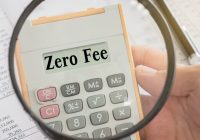 Even at this point in the economic cycle after eight years of horribly slow growth and stock market recovery from 2008-09, my associate, Aaron Pickert, and I are still bullish. To commit a spoiler however, there are some conditions over which you readers who like to worry may safely do so.
Even at this point in the economic cycle after eight years of horribly slow growth and stock market recovery from 2008-09, my associate, Aaron Pickert, and I are still bullish. To commit a spoiler however, there are some conditions over which you readers who like to worry may safely do so.
First, the positive. Every time the US stock market tries to drop down in value recently, the buyers jump in and push prices back upward. The pull back in March managed to reach slightly more than 3 percent even though the indexes have had quite a run since the end of Election week in November. At this point (yesterday afternoon), the S&P 500 is only off the March 1 high by about 2 percent. This is a sign that a lot of investors, some of whom have not been invested in stocks or funds for years, are still trying to find good entry points.
Second, the negative. Zero Interest Rate Policy as practiced by the Federal Reserve and the Treasury Department for almost nine years, has bubbled up some asset values that may turn into just a delayed problem.
In the March 24th issue of Grant’s Interest Rate Observer, Chuck Royce of Royce Mutual Funds discusses the ill effects of cheap money keeping in business many smaller companies that should have failed, been taken over by better operators, and the like. At the end of 2016, 33.9 percent of the Russell 2000 index companies had losses even before they paid interest or taxes. Some of these stocks have done better than those companies that were profitable. See www.grantspub.com.
The worst source of financial excess right now may be in the auto industry. In order to crank out sales at the current annual rate of 16-17 million vehicles, free or under market interest loans is the enticement. At the end of 2016, loans totaled a record $1.11 Trillion dollars, according to the St. Louis Federal Reserve Board.
According to Quartz.com, February 21, 2017, (https://qz.com/913093/car-loans-in-the-us-have-hit-record-levels-and-delinquencies-are-rising-fast-too/) the average auto loan has risen back to over $28,000. While the number of mortgage loans is back down to about 80 million, auto loans have risen to a record number, almost 110 million accounts. Nearly a quarter of those are subprime loans, almost $300B worth. Over 6 million consumers are at least 90 days late on their car loan payments according to the New York Federal Reserve.
Since only about $97B of the $1.1T has been packaged into market traded securities, read junk bonds, this is not supposed to be another lurking giant systemic risk. But then, Fed Chairman Ben Bernanke said in the early summer of 2008 that they did not see any major risk of recession, only a few months before the wheels fell off completely.
At some point, even the best bull market runs reach their end. We are watching out for that time.
(Advice is intended to be general in nature. Past performance is no guarantee of future results.)
